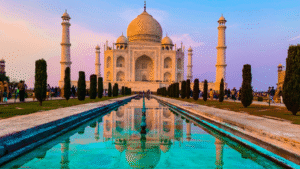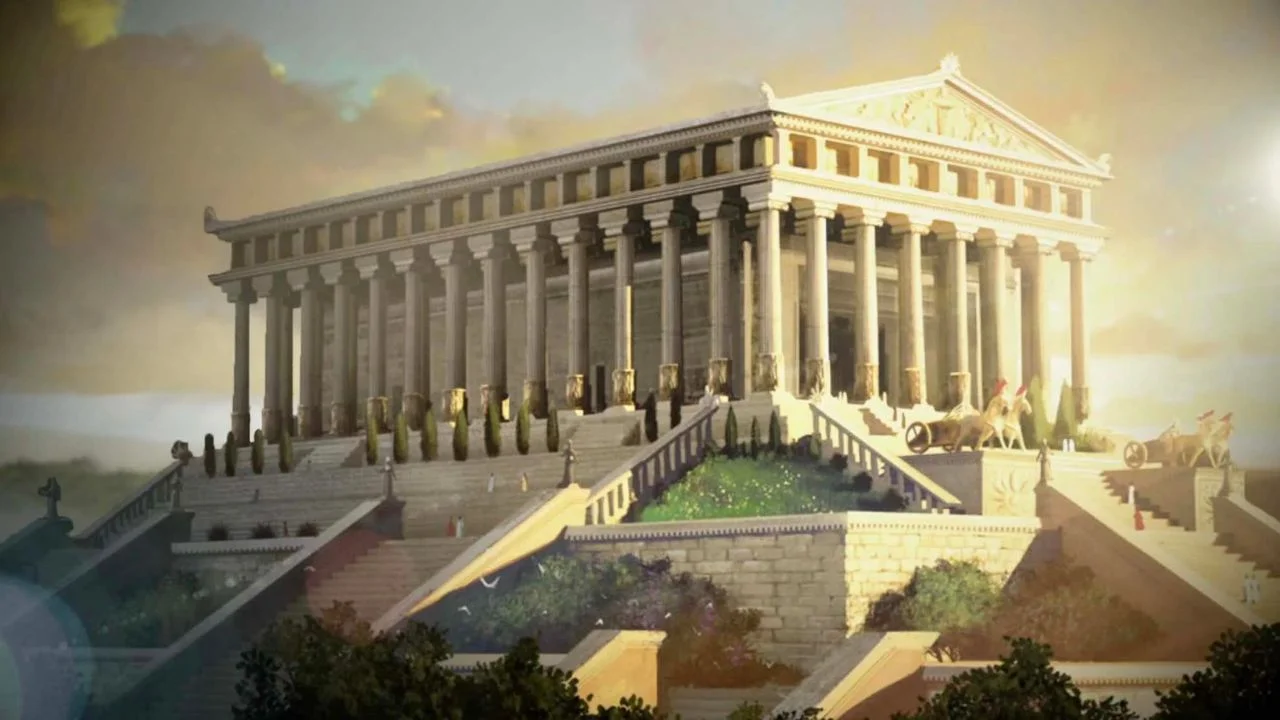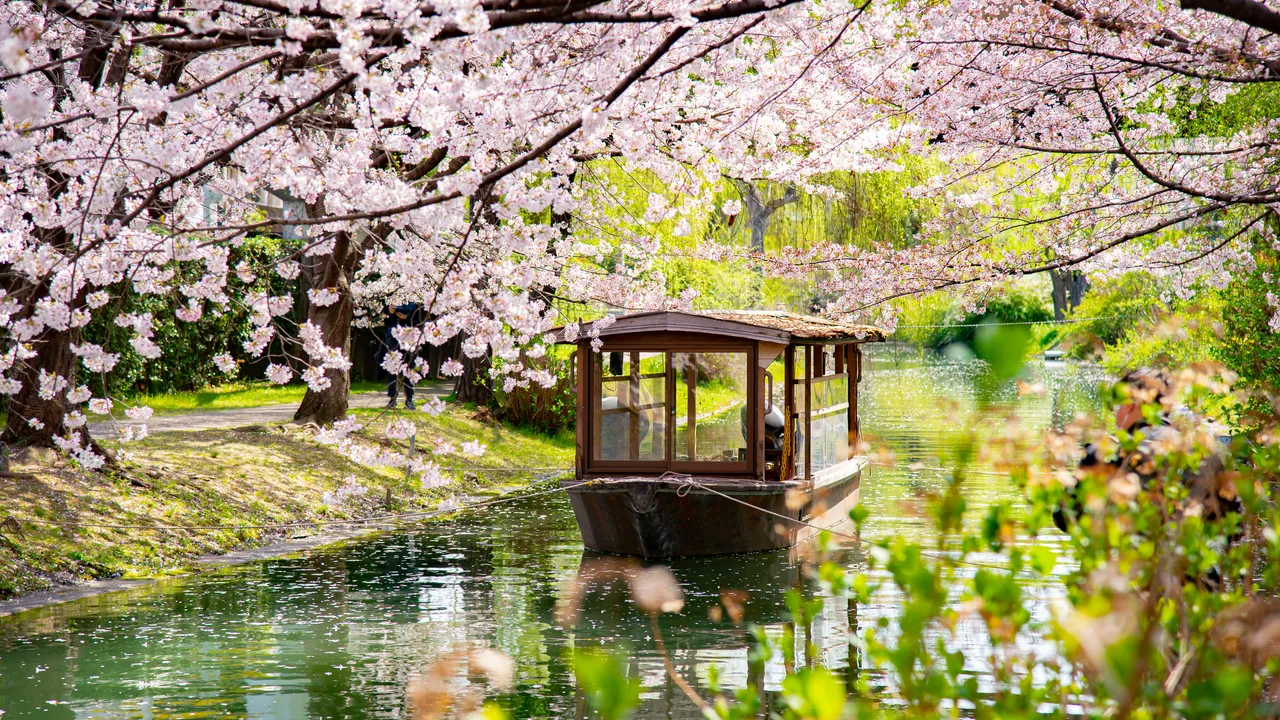India, a land of vibrant contrasts and timeless allure, beckons travelers with its rich tapestry of culture, history, spirituality, and natural beauty. From the majestic forts of Rajasthan to the serene backwaters of Kerala, and the bustling streets of Delhi to the tranquil ashrams of Rishikesh, India in 2025 remains an eternal destination that captivates the soul. This comprehensive travel guide offers essential tips, safety advice, and a 10-day itinerary to explore “Eternal India,” focusing on its iconic landmarks, spiritual heart, and diverse landscapes. Whether you’re a first-time visitor or a seasoned traveler, this journey promises an unforgettable immersion into one of the world’s most enchanting nations.
Why Visit India in 2025?
India’s enduring appeal lies in its ability to blend ancient traditions with modern dynamism. Spanning 3.3 million square kilometers, it offers a kaleidoscope of experiences:
- Cultural Riches: Home to 39 UNESCO World Heritage Sites, including the Taj Mahal, Ajanta Caves, and Hampi, India showcases millennia of art, architecture, and history.
- Spiritual Depth: As the birthplace of Hinduism, Buddhism, Jainism, and Sikhism, India offers pilgrimage sites like Varanasi, Amritsar, and Bodh Gaya that resonate with seekers worldwide.
- Natural Diversity: From the Himalayan peaks of Ladakh to Goa’s palm-fringed beaches and Assam’s lush tea estates, India’s landscapes are breathtakingly varied.
- Culinary Delights: Savor spicy street food, aromatic biryanis, and regional specialties like dosas and thalis, reflecting India’s multicultural heritage.
- Accessibility: Simplified e-visas, improved infrastructure, and budget-friendly options make India more welcoming than ever.
The best time to visit is October to March, when temperatures range from 59–86°F (15–30°C) and festivals like Diwali (October/November) and Holi (March) add vibrant energy. Avoid the monsoon season (June–September) for most regions, except Kerala, where rains enhance the greenery.
Planning Your Trip
Entry Requirements
- Visa: Citizens of over 160 countries (including the US, UK, EU, Canada, and Australia) can apply for an e-Tourist Visa via India’s official portal (indianvisaonline.gov.in). Valid for 30 days ($25 USD) or 1 year ($40 USD) with multiple entries, it’s processed in 2–4 days. Other nationalities require a visa through Indian embassies.
- Health: No mandatory vaccinations are required, but hepatitis A, typhoid, and tetanus shots are recommended. Carry proof of yellow fever vaccination if arriving from affected areas. Comprehensive travel insurance covering medical emergencies and cancellations is essential.
- Passport: Ensure your passport is valid for six months beyond entry and has two blank pages.
Getting There
- By Air: Delhi’s Indira Gandhi International Airport (DEL) and Mumbai’s Chhatrapati Shivaji Maharaj International Airport (BOM) are primary gateways, served by Air India, Emirates, British Airways, and Qatar Airways from London, New York, and Dubai. Other hubs include Bengaluru (BLR), Chennai (MAA), and Kolkata (CCU).
- By Land: Crossings from Nepal (Sunauli/Belahiya) and Pakistan (Wagah/Attari) are open but require pre-arranged visas and thorough checks. Overland travel from Bangladesh or Bhutan is less common but possible with permits.
- By Train: The Samjhauta Express connects India and Pakistan, but services are subject to diplomatic relations.
Getting Around
- Trains: India’s vast railway network (irctc.co.in) is affordable and scenic. Book AC classes (1AC, 2AC) for comfort on overnight routes like Delhi to Agra (~$10–20). Use 12go.asia for tickets.
- Flights: Domestic airlines like IndiGo, Vistara, and Air India connect cities (~$30–100 one-way). Book early via Cleartrip or MakeMyTrip.
- Buses and Taxis: Volvo buses (~$5–15) and rideshare apps like Ola and Uber (~$2–5 for 5 km) serve urban and intercity travel. Prepaid taxis are safer at airports.
- Auto-Rickshaws: Bargain for fares (~$1–2 for short trips). Agree on prices or insist on meters.
- Car Rental: Ideal for Rajasthan or Kerala (~$40–60/day with driver). Self-driving is not recommended due to chaotic traffic.
Safety Considerations
India is generally safe for tourists, but vigilance is key:
- General Safety: Petty theft and scams (e.g., fake guides) occur in tourist areas like Delhi’s Connaught Place. Keep valuables secure and avoid isolated areas at night.
- Women Travelers: Dress modestly, avoid solo travel after dark, and use women-only compartments on trains or metros. Share your itinerary with family.
- Health Precautions: Drink bottled water (~$0.50/liter), avoid uncooked street food, and carry hand sanitizer. Pharmacies are widespread but verify medicine authenticity.
- Cultural Sensitivity: Remove shoes at religious sites, cover shoulders and knees, and ask permission before photographing people. Public displays of affection are frowned upon.
- Emergency Planning: Save local emergency numbers (100 for police, 108 for ambulance) and register with your embassy.
Budget and Currency
- Currency: The Indian Rupee (INR) is used (~83 INR = $1 USD as of April 2025). ATMs are widespread; carry small denominations for street vendors. UPI apps like Paytm are popular for cashless payments.
- Daily Costs: Budget travelers can manage on $20–40/day (hostels ~$5–10, meals ~$2–5). Mid-range travelers should budget $50–100/day.
- Tipping: Tip 5–10% in restaurants, ₹20–50 for drivers, and ₹10–20 for porters.
10-Day Itinerary: Eternal India’s Highlights
This 10-day itinerary covers India’s Golden Triangle (Delhi, Agra, Jaipur), the spiritual heart of Varanasi, and the serene backwaters of Kerala, offering a balanced exploration of north and south. Adjust for longer stays or additional regions like Rajasthan or the Himalayas.
Day 1: Arrive in Delhi – Explore the Capital
Morning: Land at Delhi’s Indira Gandhi International Airport and settle into a hostel like Moustache Hostel (~$8) or a hotel like The Lalit (~$80). Visit Humayun’s Tomb, a Mughal masterpiece (~$7). Afternoon: Explore Old Delhi’s Chandni Chowk for street food like parathas (~$2) and Jama Masjid, India’s largest mosque (free, ₹300 for camera). Wander through the Red Fort (~$7). Evening: Dine at Indian Accent for modern Indian cuisine (~$30) or Karim’s for kebabs (~$5). Stroll Connaught Place for nightlife.
Tip: Hire a licensed guide via GetYourGuide (~$20) to navigate Old Delia’s chaos.
Day 2: Delhi to Agra – Taj Mahal
Morning: Take the Gatimaan Express train to Agra (2 hours, ~$15). Check into a guesthouse like The Coral Tree (~$20) or Taj Resort (~$60). Afternoon: Visit the Taj Mahal at sunset, a UNESCO marvel (~$15). Explore its marble symmetry and gardens. Lunch on petha sweets (~$1) at a local stall. Evening: Tour Agra Fort (~$7) for Mughal history. Dine at Pinch of Spice for butter chicken (~$10).
Tip: Book Taj Mahal tickets online to skip queues. Wear shoe covers or remove shoes inside.
Day 3: Agra to Jaipur – Pink City
Morning: Drive 240 km (4–5 hours) to Jaipur, stopping at Fatehpur Sikri, a deserted Mughal city (~$7). Arrive and check into Alsisar Haveli (~$80) or Zostel Jaipur (~$10). Afternoon: Visit Amber Fort, a hilltop palace with stunning courtyards (~$7). Explore the nearby Jaigarh Fort for panoramic views (~$3). Evening: Dine at Chokhi Dhani for Rajasthani thali (~$15) with folk performances. Shop for textiles at Johari Bazaar.
Tip: Hire a tuk-tuk (~$5/hour) for Jaipur’s sights but negotiate fares.
Day 4: Jaipur – Palaces and Markets
Morning: Tour the City Palace (~$10) and Jantar Mantar, an astronomical observatory (~$3). Visit Hawa Mahal, the “Palace of Winds” (~$3). Afternoon: Lunch at LMB for kachoris (~$5). Explore Bapu Bazaar for handicrafts and jewelry (~$10–50). Optional: Take a Bollywood movie at Raj Mandir Cinema (~$3). Evening: Dine at Bar Palladio for fusion cuisine (~$20). Relax at a rooftop café like The Johri.
Tip: Bargain politely in markets; prices can drop by 30–50%.
Day 5: Jaipur to Delhi – Travel to Varanasi
Morning: Drive or take a train back to Delhi (5–6 hours, ~$10–20). Explore Qutub Minar (~$7) if time allows. Afternoon: Catch an overnight train (Shiv Ganga Express, ~12 hours, ~$15–30) or a flight (~2 hours, ~$50) to Varanasi. Evening: Rest on the train or arrive in Varanasi and check into a guesthouse like Kedareswar (~$15).
Tip: Book train tickets 60 days in advance via IRCTC for sleeper or AC classes.
Day 6: Varanasi – Spiritual Heart
Morning: Take a sunrise boat ride on the Ganges River (~$10) to witness ghats, rituals, and cremations. Visit Dashashwamedh Ghat and Kashi Vishwanath Temple (~$3, book entry). Afternoon: Explore Sarnath, where Buddha gave his first sermon (~$5). Lunch on lassi and chaat (~$3) at a local stall. Evening: Attend the Ganga Aarti ceremony at Dashashwamedh Ghat (free). Dine at Baati Chokha for Bihari cuisine (~$8).
Tip: Dress modestly and avoid photographing cremations out of respect.
Day 7: Varanasi to Kochi – Kerala’s Gateway
Morning: Fly to Kochi via Delhi or Mumbai (~4–6 hours, ~$80–120). Check into Fort House (~$50) or a hostel like Zostel Kochi (~$10). Afternoon: Explore Fort Kochi’s colonial charm, including the Chinese fishing nets and St. Francis Church (free). Visit Mattancherry Palace (~$3) for murals. Evening: Dine at Kashi Art Café for seafood (~$10). Enjoy a Kathakali dance performance at Kerala Kathakali Centre (~$5).
Tip: Kochi’s rickshaws are cheap (~$1–2); confirm prices upfront.
Day 8: Kochi to Alleppey – Backwaters
Morning: Drive 60 km (1.5 hours) to Alleppey (Alappuzha). Board a houseboat (~$80–150 for 2 people, including meals) for a day cruise through Kerala’s backwaters. Afternoon: Glide past rice paddies, coconut groves, and villages. Enjoy a Keralan lunch of fish curry and appam onboard. Evening: Disembark and stay at a homestay like Emerald Isle (~$40) or a budget guesthouse (~$15). Dine on toddy and karimeen fry (~$8).
Tip: Book houseboats via Kerala Tourism or negotiate directly at Alleppey’s jetty.
Day 9: Alleppey to Munnar – Hill Stations
Morning: Drive 160 km (4 hours) to Munnar, a tea-carpeted hill station. Check into Windermere Estate (~$100) or a hostel like Zostel Munnar (~$10). Afternoon: Visit the Tea Museum (~$3) to learn about tea production. Explore Mattupetty Dam and Echo Point for scenic walks (~$2). Evening: Dine at Rapsy Restaurant for South Indian thali (~$5). Stargaze in Munnar’s clear skies.
Tip: Wear layers; Munnar’s evenings are cool (50°F/10°C).
Day 10: Munnar to Kochi – Departure
Morning: Hike in Eravikulam National Park to spot Nilgiri tahr (~$5, closed February–March). Shop for tea and spices (~$5–10). Afternoon: Drive back to Kochi (4 hours). Visit Jew Town and Paradesi Synagogue (~$1) if time allows. Lunch at Fusion Bay for prawn curry (~$8). Evening: Depart from Kochi International Airport, or extend your trip to Goa, Rajasthan, or the Andamans.
Tip: Arrive at the airport 3 hours early for international flights.
Must-Try Experiences
- Festivals: Celebrate Diwali with fireworks or Holi with colored powders. Check 2025 dates via India Tourism.
- Cuisine: Savor chaat in Delhi, biryani in Hyderabad, or dosas in Kerala. Take a street food tour (~$20) for safe sampling.
- Yoga and Ayurveda: Join a yoga retreat in Rishikesh (~$50/day) or an Ayurvedic massage in Kerala (~$30).
- Wildlife: Spot tigers in Ranthambore or one-horned rhinos in Kaziranga (extend itinerary, ~$100/safari).
- Crafts: Buy silk sarees in Varanasi, block-printed textiles in Jaipur, or spices in Kochi (~$5–50).
Practical Tips
- Accommodation: Book via Booking.com or Agoda. Hostels (~$5–15) and homestays (~$20–50) are budget-friendly; hotels (~$50–100) offer comfort. Confirm visa support if needed.
- Connectivity: Buy an Airtel or Jio SIM (~$5 for 2GB/day) at airports. Wi-Fi is common in cities but unreliable in rural areas.
- Language: English is widely spoken. Learn basic Hindi phrases like “Namaste” (hello) for courtesy.
- Sustainability: Use reusable water bottles and support eco-friendly homestays. Avoid plastic-heavy souvenirs.
- Packing: Pack modest clothing, a scarf for temples, comfortable shoes, and a universal adapter. Carry toilet paper for rural stops.
Final Thoughts
Eternal India in 2025 is a journey through time, where ancient temples coexist with bustling cities, and spiritual serenity meets vibrant chaos. From the Taj Mahal’s marble splendor to Varanasi’s sacred ghats and Kerala’s tranquil backwaters, this itinerary captures India’s soul. Plan carefully, embrace cultural nuances, and let India’s warmth and diversity enchant you. Your adventure into the heart of this timeless land awaits!
Resources:
- India Tourism: www.incredibleindia.org
- Indian Railways: www.irctc.co.in
- FCDO Travel Advice: www.gov.uk/foreign-travel-advice/india
- 12go.asia for transport bookings





Leave a Reply